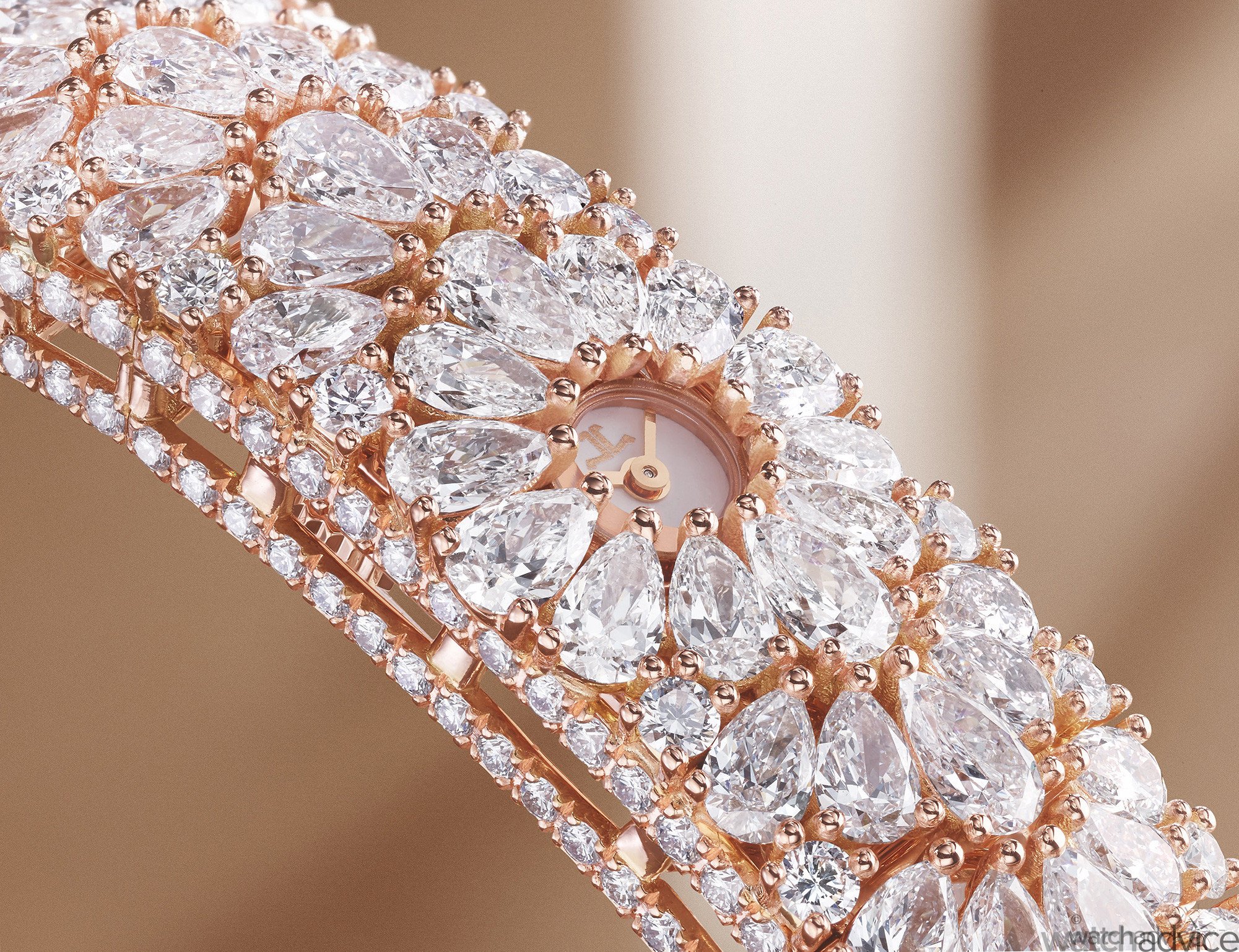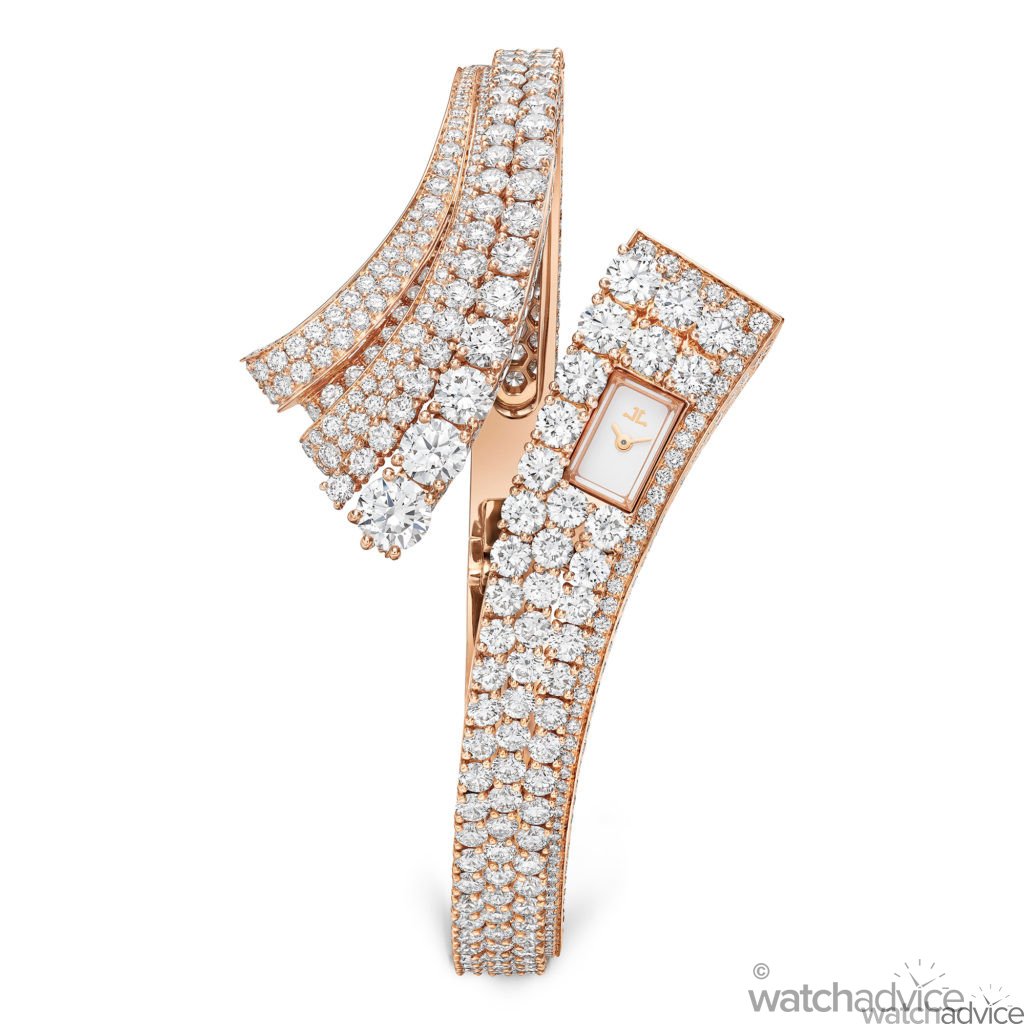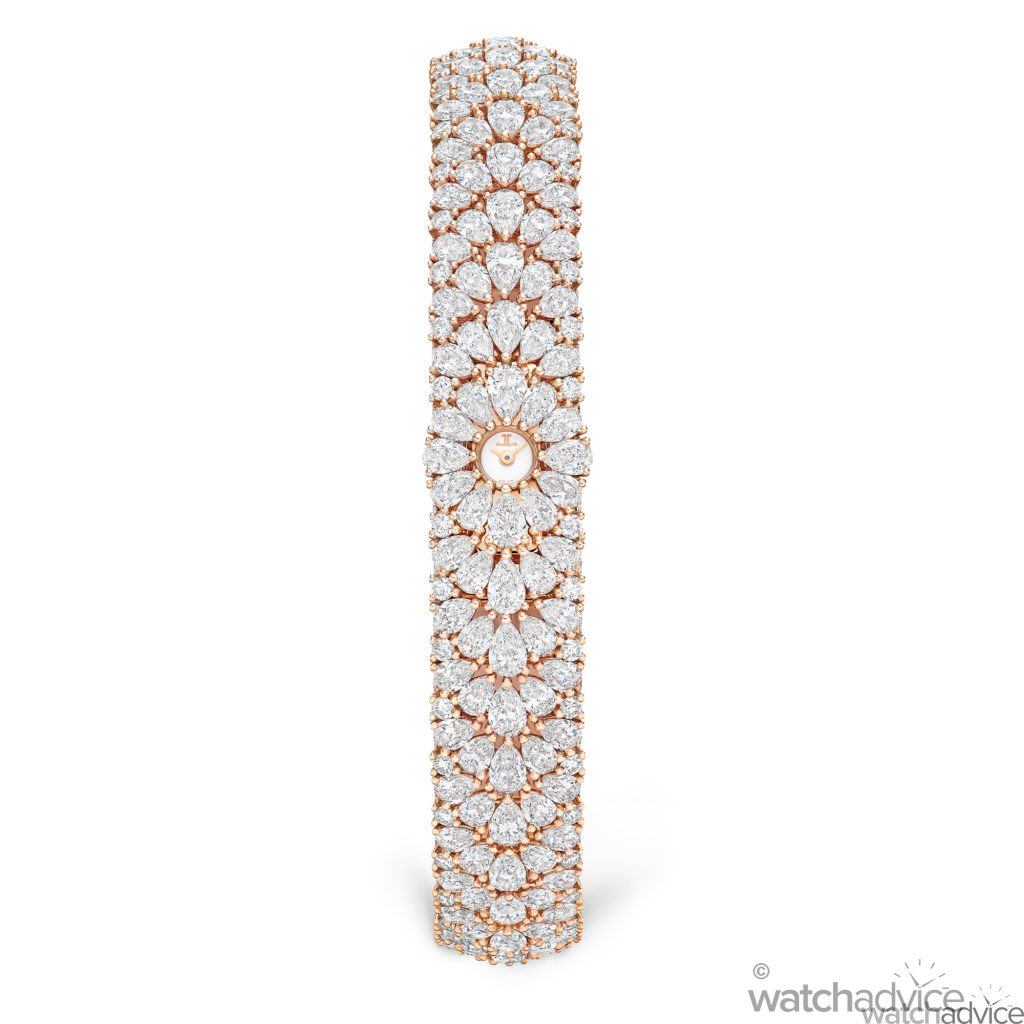In 1929 Jaeger-LeCoultre created the smallest calibre in the world, the Calibre 101 movement is a remarkable feat of miniaturisation. At 14mm long, less than 5mm wide, and weighing barely one gram, the tiny hand-wound calibre remains the smallest mechanical movement in the world. It is also one of the world’s oldest movements that continues to be in production. Originally conceived and developed for jewellery watches and introduced in 1929 by La Grande Maison, the Calibre 101 revolutionised feminine watchmaking – its minuscule size and baguette shape offered new realms of aesthetic freedom to designers.
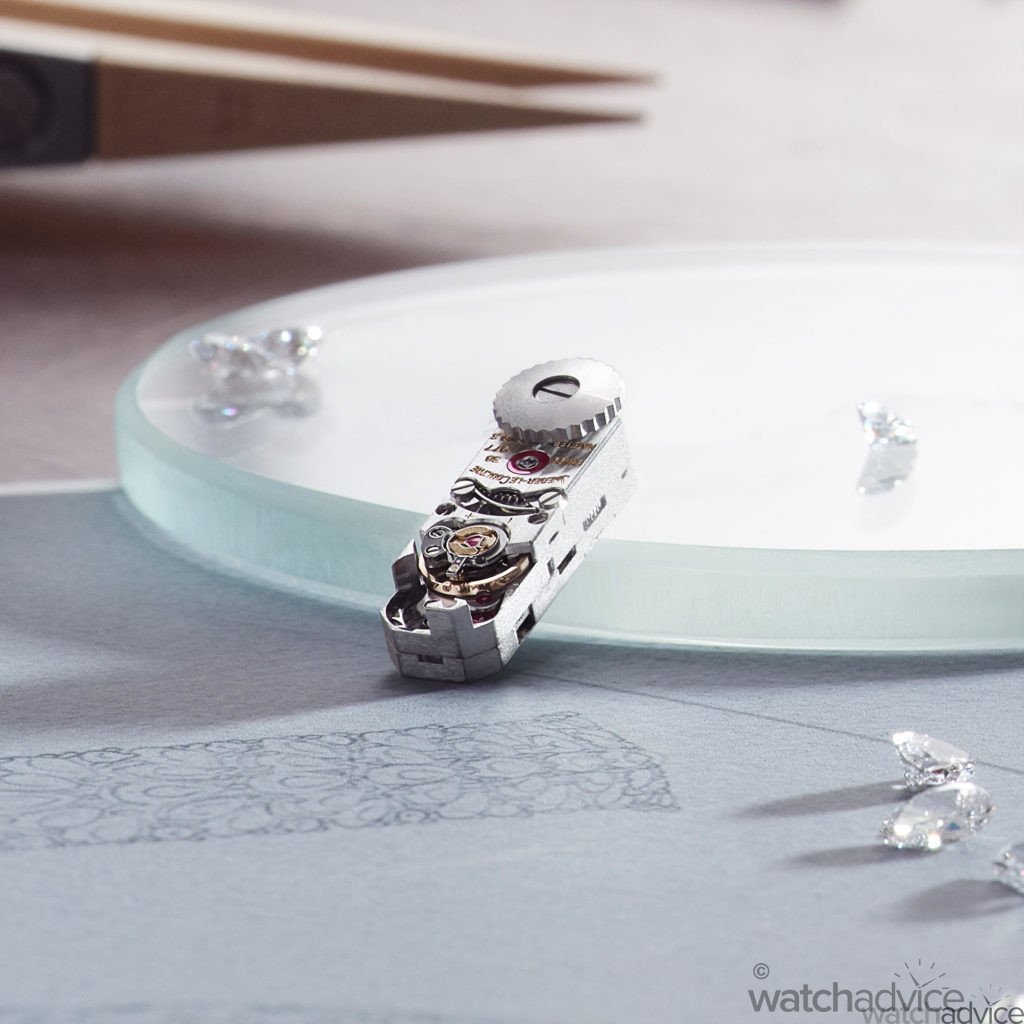
Over the years, Calibre 101 has appeared in jewellery watches by Jaeger-LeCoultre under its name, as well as in creations by other great Maisons. These rare timepieces have graced the wrists of exceptional women, including Queen Elizabeth II, who wore one – a gift from France’s Président– for her coronation in 1953.
Introducing two new High Jewellery watches for 2020: Snowdrop and Bangle, Jaeger-LeCoultre places its Calibre 101 in the spotlight again. The two entirely original designs reaffirm the unique alliance between high jewellery and fine watchmaking made possible by this exceptional mechanism.
The artisans at Jaeger-LeCoultre have embraced a peculiar jewellery led-approach to design the two diamond-set timepieces. The bracelets were designed first, followed by the gem setting and finally incorporating the movements into the designs. Normally, designing the watch takes the opposite approach, beginning with the case and then creating bracelets or straps to complement it.
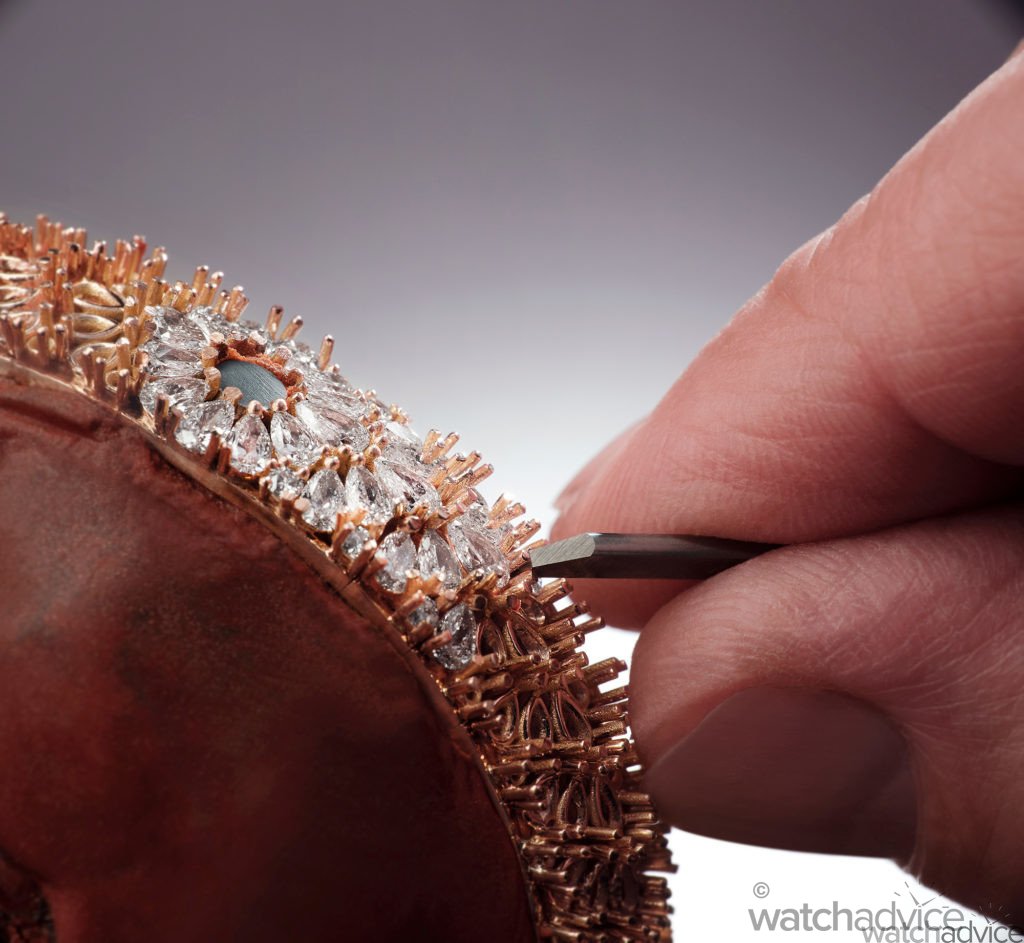
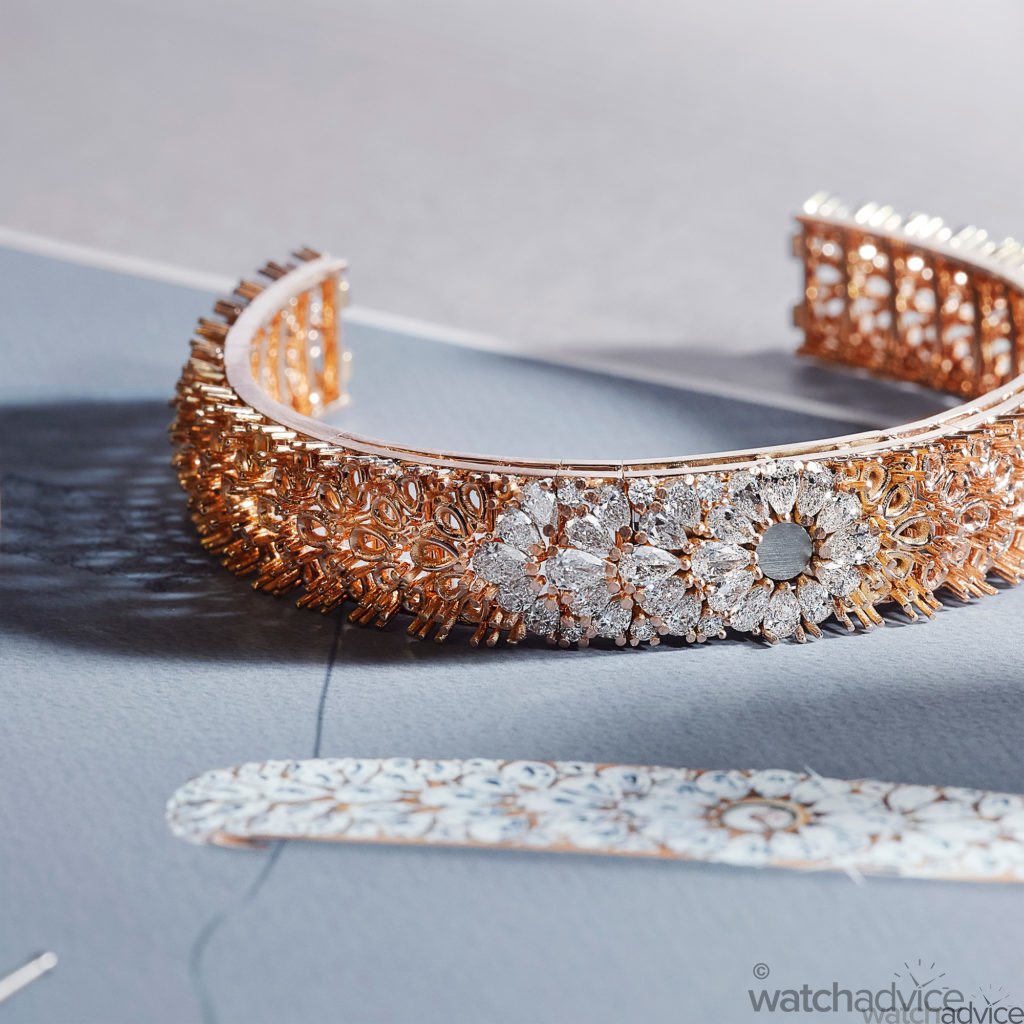
Both bracelets adhere faithfully to the classical high jewellery codes and are composed of pink gold set with diamonds – using only stones classified IF to VVS. However, the designs are utterly different in both form and character, emphasising the creative freedom allowed by the diminutive Calibre 101.
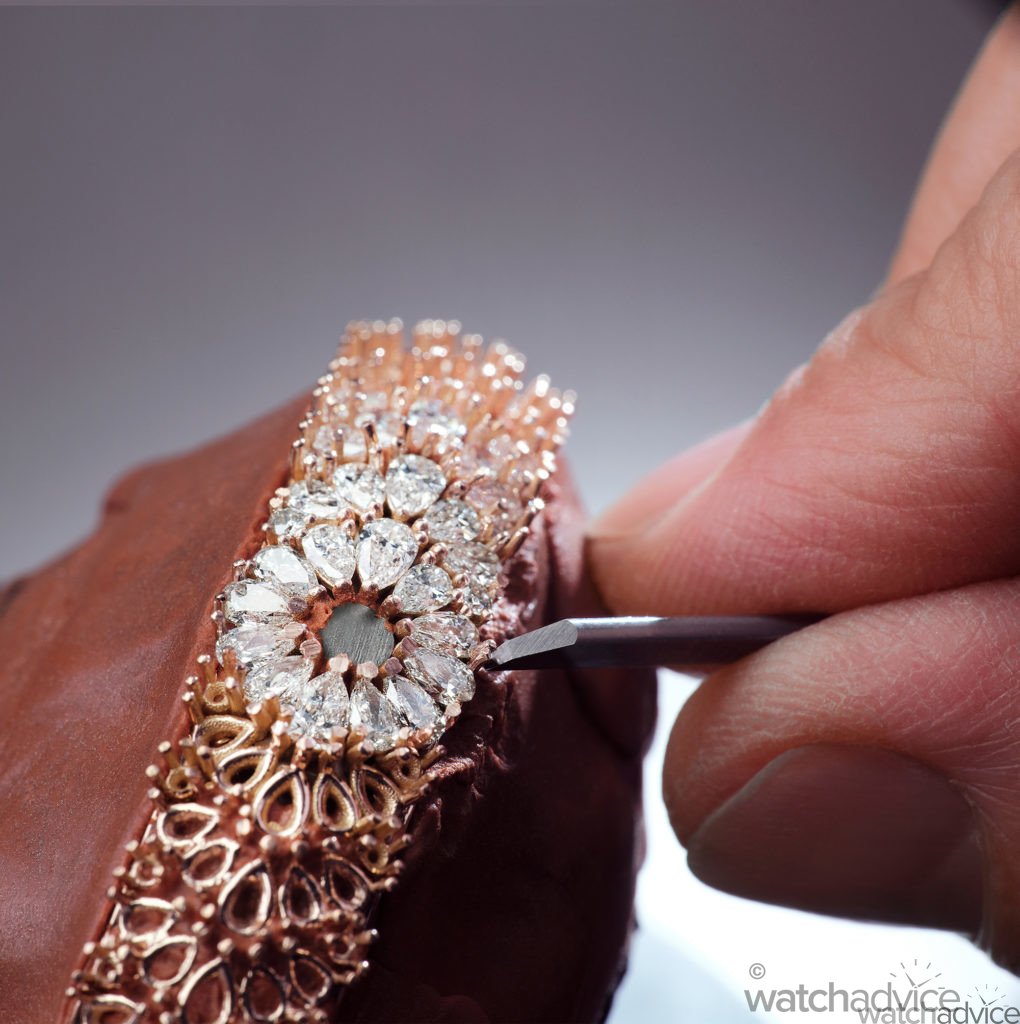
Snow Drop
The design is inspired by the white bell-shaped flowers that grow through a thin layer of snow in the Vallee de Joux, the watchmaking district of Switzerland. The manchette-style bracelet has a circle of pear-shaped diamonds surrounding the dial to form a flower, and waves of diamonds repeat the petal pattern in perfect symmetry, all the way around, exuding delicate femininity. Jaeger-LeCoultre’s designers chose a ‘griffe’ setting for the diamonds, which minimises the metal’s presence and allows light to pass through the stones from all angles. This intensifies the scintillation of the diamonds in the watch, creating an impression that the diamonds could almost be floating on the surface of the bracelet.
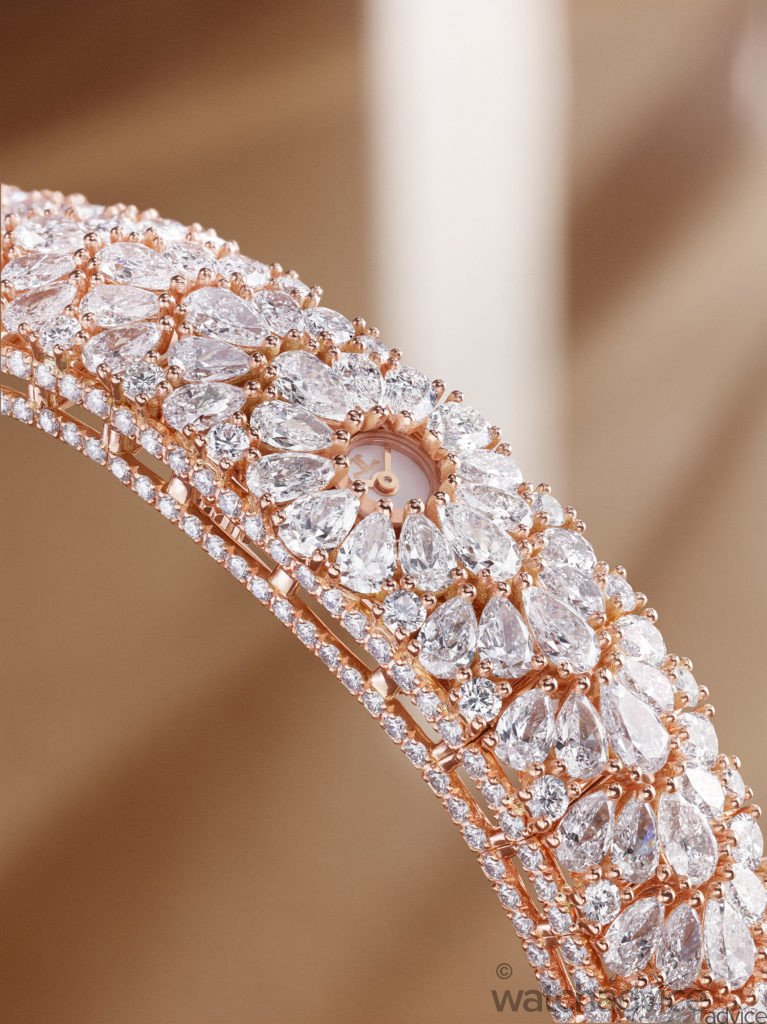
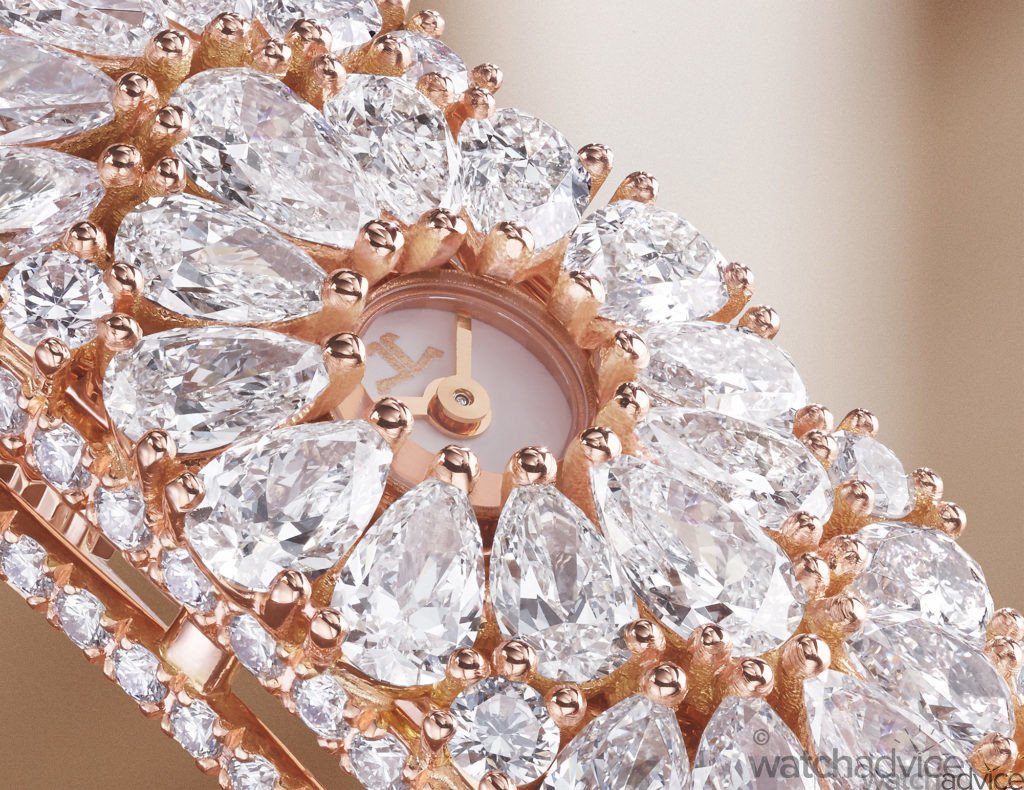
The bracelet consists of 904 diamonds, of which 204 are pear-shaped and the remainder are classic brilliant-cut bringing the total weight of diamonds to 20.9 carats. The bracelet’s structure is supported by two bands of gold, each of them grain-set with diamonds. The craftsmanship involved to create the snowdrop bracelet is a time-intensive process, with the gem-setting work alone representing 130 hours of work by the jewellery artisans of Jaeger-LeCoultre.
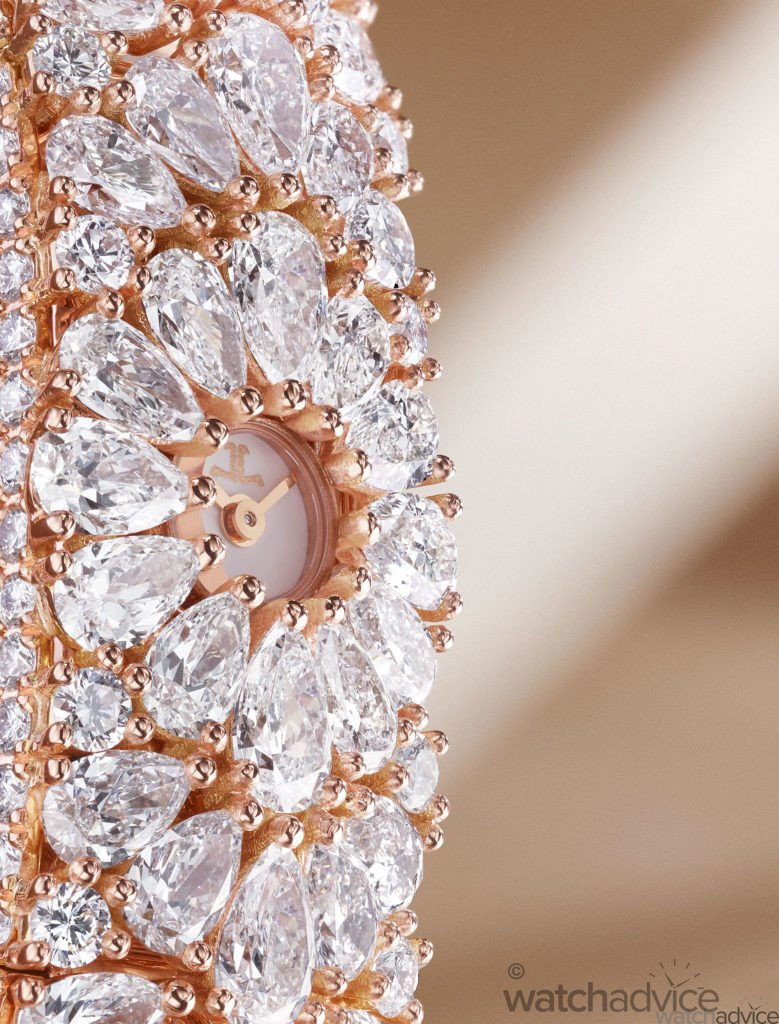
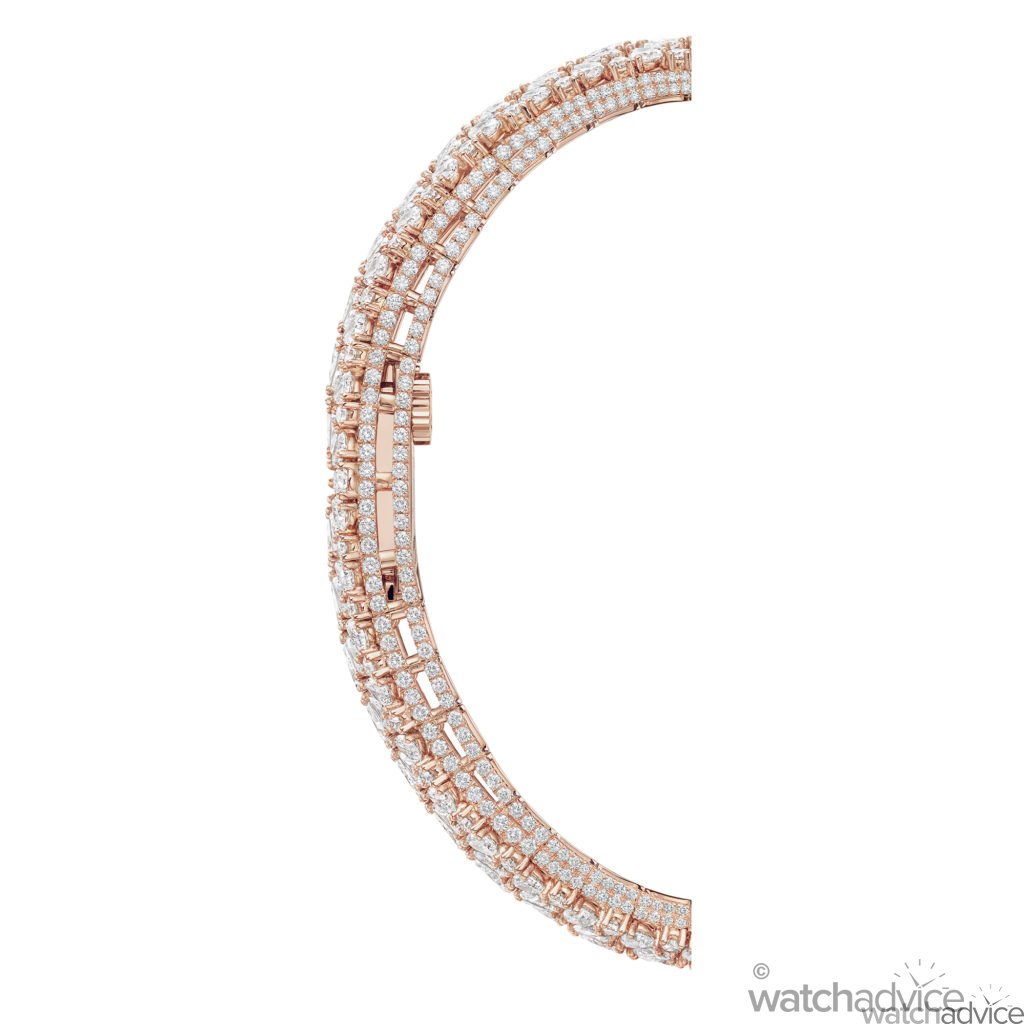
Bangle
The Bangle watch expresses a bolder form of femininity, the design inspiration to create the bangle watch was taken from the Art Deco pattern which is known for its precise clean lines, geometric shapes, and decoration. However, the 20th-century modernism of the Art Deco pattern saw the introduction of curving form and long horizontal lines. The later period of the style is called Streamline Moderne. The Bangle watch shows off these patterns with a dynamic interplay of symmetry and asymmetry.
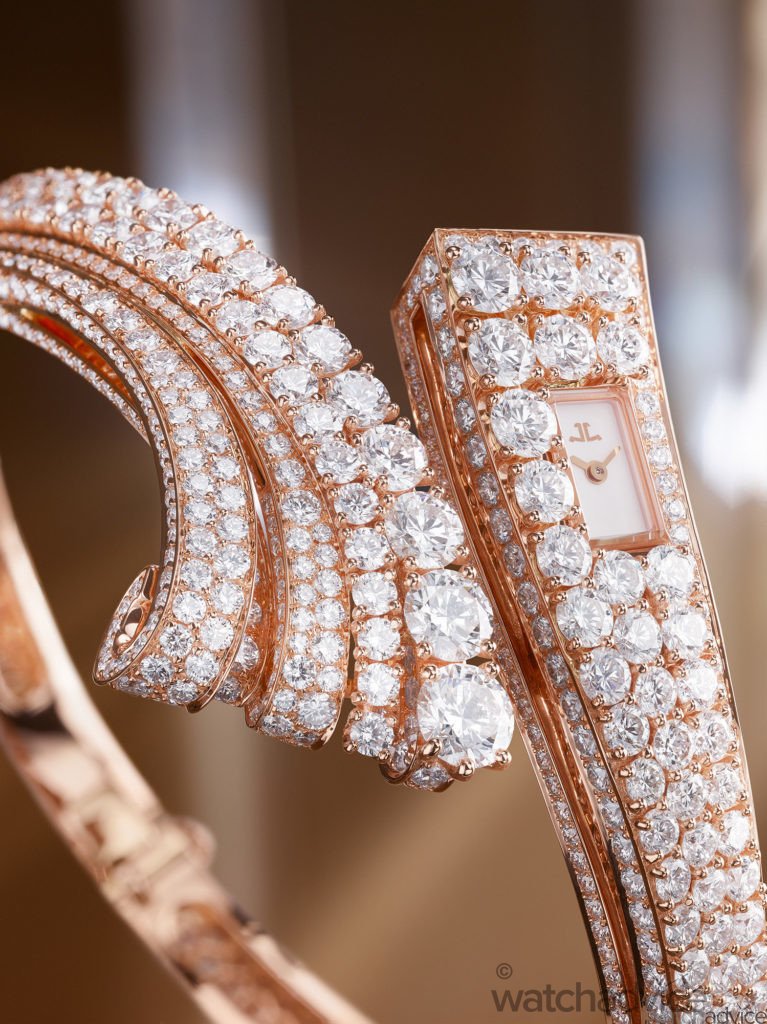
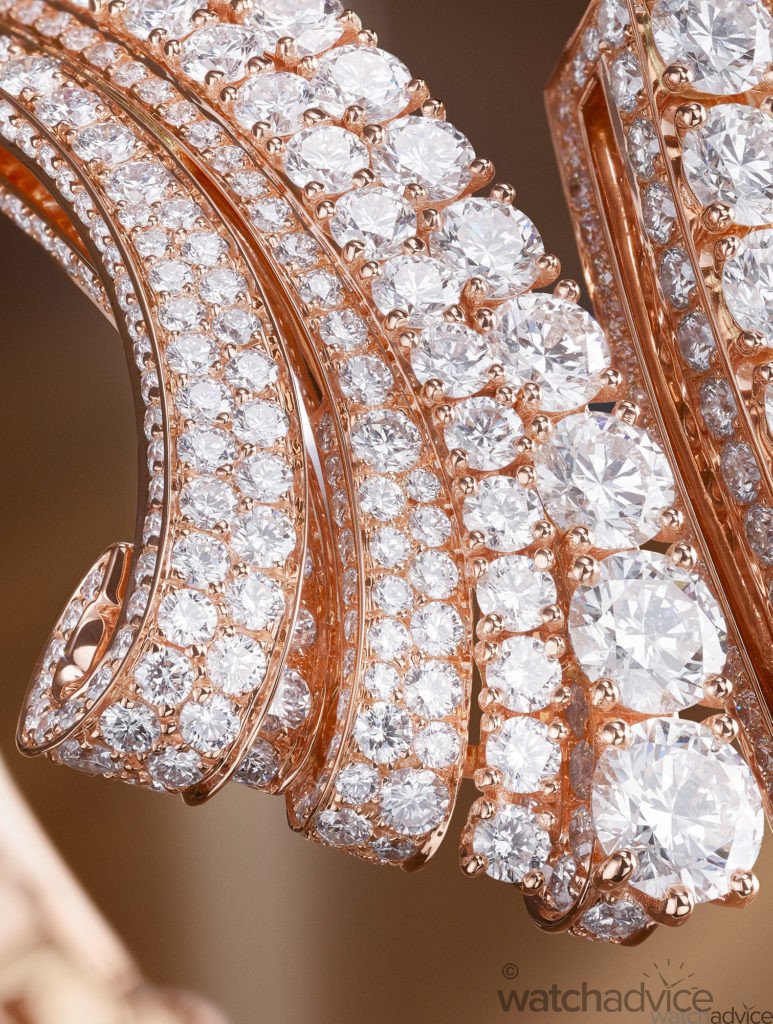
This uber exquisite design bracelet is set with 996 brilliant-cut diamonds graduated in size to emphasize the sweeping curves of the design. The artisans have combined the griffe (144 diamonds) and grain setting (852 diamonds) techniques to heighten the diamond’s three-dimensional effect and maximise the play of light. The bracelet has a total diamond weight of 19.7 carats. The gold bands which rung along both sides of the bracelet are appointed with rows of grain-set diamonds, supporting its structure. The bracelet needs no clasp as it delicately opens with a simple twist of its two sides.
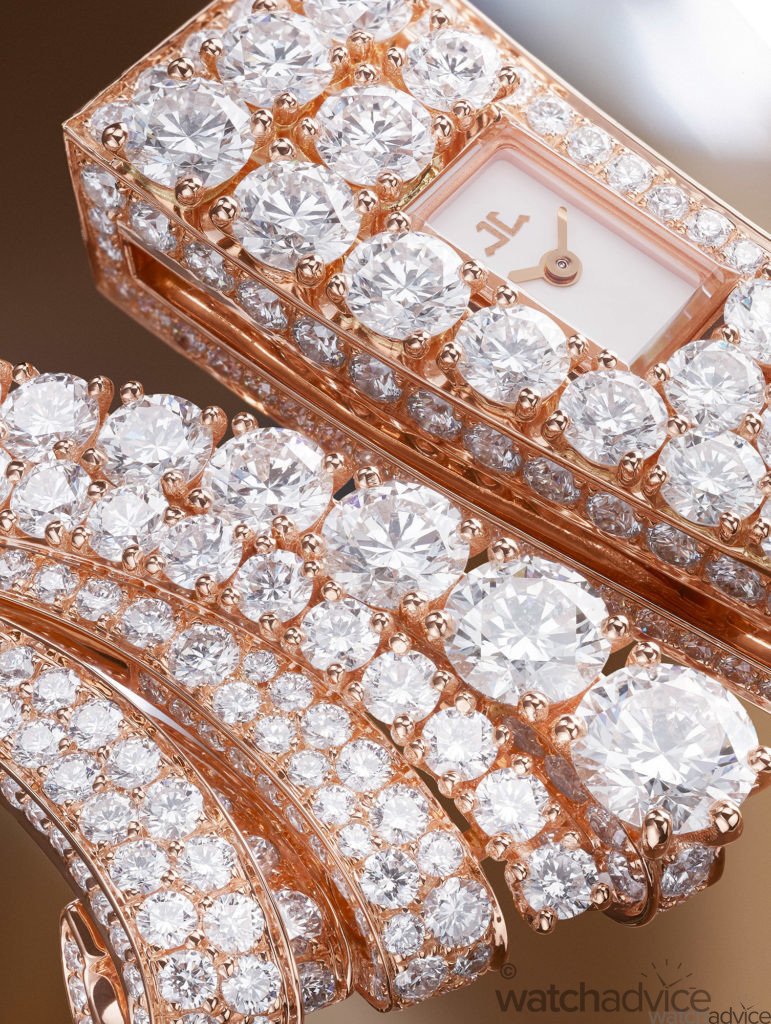
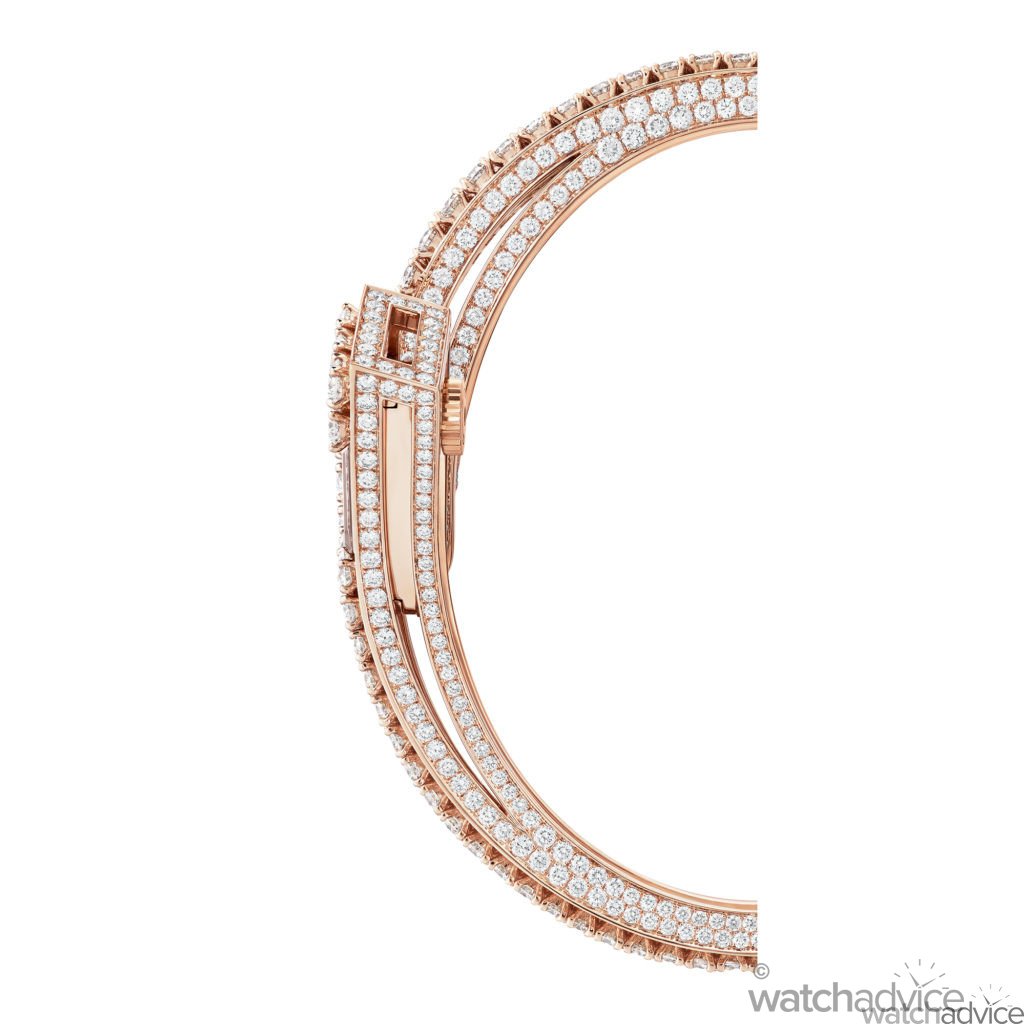
History of calibre 101
Watchmaking became increasingly sophisticated from the late 19th century onwards, including miniaturisation. La Grande Maison had innovated in this field and developed diminutive LeCoultre Calibre 7HP, introduced in 1880 for small enamelled and gem-set watches; and LeCoultre Calibre 6EB, introduced in 1908, which measured barely more than 1cm square.
The story of the Calibre 101 is inseparable from that of the “Duoplan” calibre. As the name suggests the movement was stacked on dual levels. The Duoplan movement was first developed in 1925 and made specifically to fit watches for small wrist sizes. The escapement is set on one plane, the barrel, and cogs on another – and the mainspring is wound by a flat crown set into the base of the case. This gave enough room to accommodate a larger balance wheel and thus ensure great precision for timekeeping in miniature movements.
In 1929, Jaeger-LeCoultre further perfected the Duoplan calibre making it even smaller which they named Calibre 101. The Calibre 101 represents the apotheosis of this quest to merge accurate timekeeping with tiny dimensions, conclusively demonstrating Jaeger-LeCoultre’s mastery of micro-mechanical engineering.
Moving forward 90 years, the movement has benefited from technological advancements in materials and machining, but its dimensions and architecture which makes this movement impeccable remain unchanged. The current version represents its fourth generation, Calibre 101/4 has 98 components (compared with the original 78), measures 14 mm x 4.8 mm, with a thickness of 3.4 mm (a volume of 0.2 cm3) and weighs barely one gram. Its balance wheel oscillates at 21,600 vibrations per hour (3 Hertz frequency) and the mainspring provides a power reserve of 33 hours.
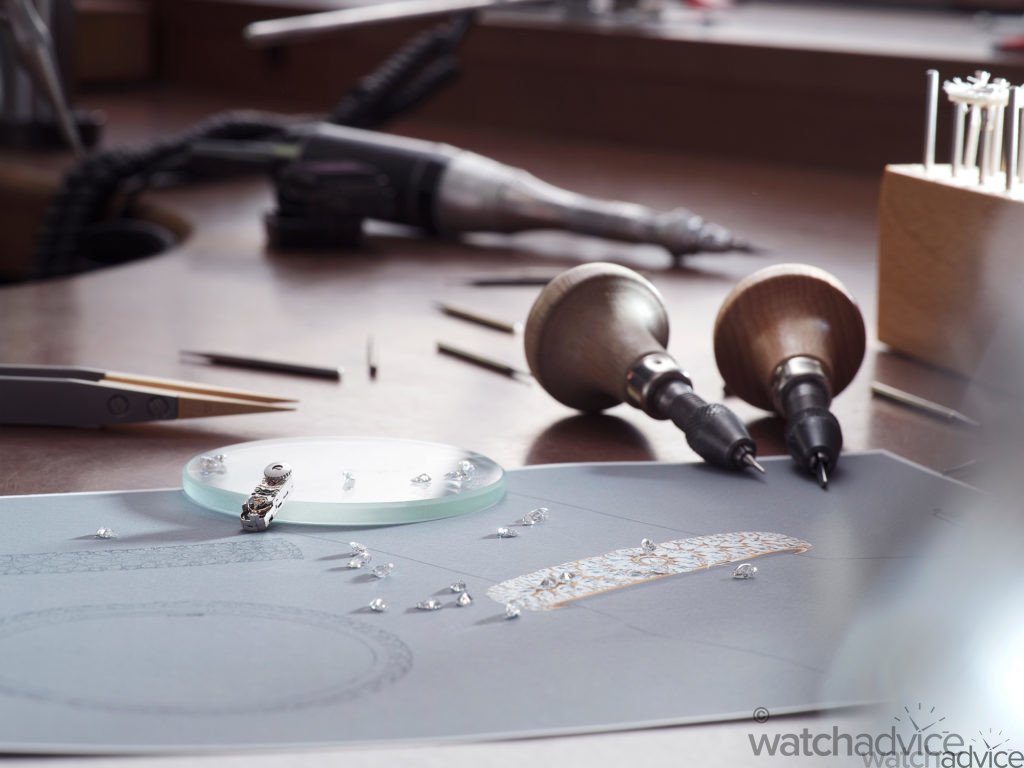
Every Calibre 101 movement is unique as each movement requires custom-produced components and adjustments. Only a handful of watchmakers at the Jaeger-LeCoultre Manufacture have ever mastered the skills necessary to produce and assemble movements at such a microscopic scale. Consequently, only a few dozen can be produced each year to grace the wrists of exceptional women.
The Calibre 101 is truly a pinnacle of refinement and exceptional technique, it embodies the very essence of excellence.
Specification:
101 Snowdrop
Model Reference: Q2882201
Case Diameter: 18.35 x 5.98 mm
Dial: Silvered opaline
Case: Pink Gold
Functions: Hours and Minutes
Movement: Calibre 101 – manually wound
Power Reserve: 33 hours
Bracelet: Pink gold set with 904 diamonds, including brilliant-cut and 204 pear-shaped stones for 20.9 carats
101 Bangle
Model Reference: Q2892201
Case Diameter: 18.35 x 5.98 mm
Dial: Silvered opaline
Case: Pink Gold
Functions: Hours and Minutes
Movement: Calibre 101 – manually wound
Power Reserve: 33 hours
Bracelet: Pink gold set with 996 brilliant-cut diamonds for 19.7 carats


